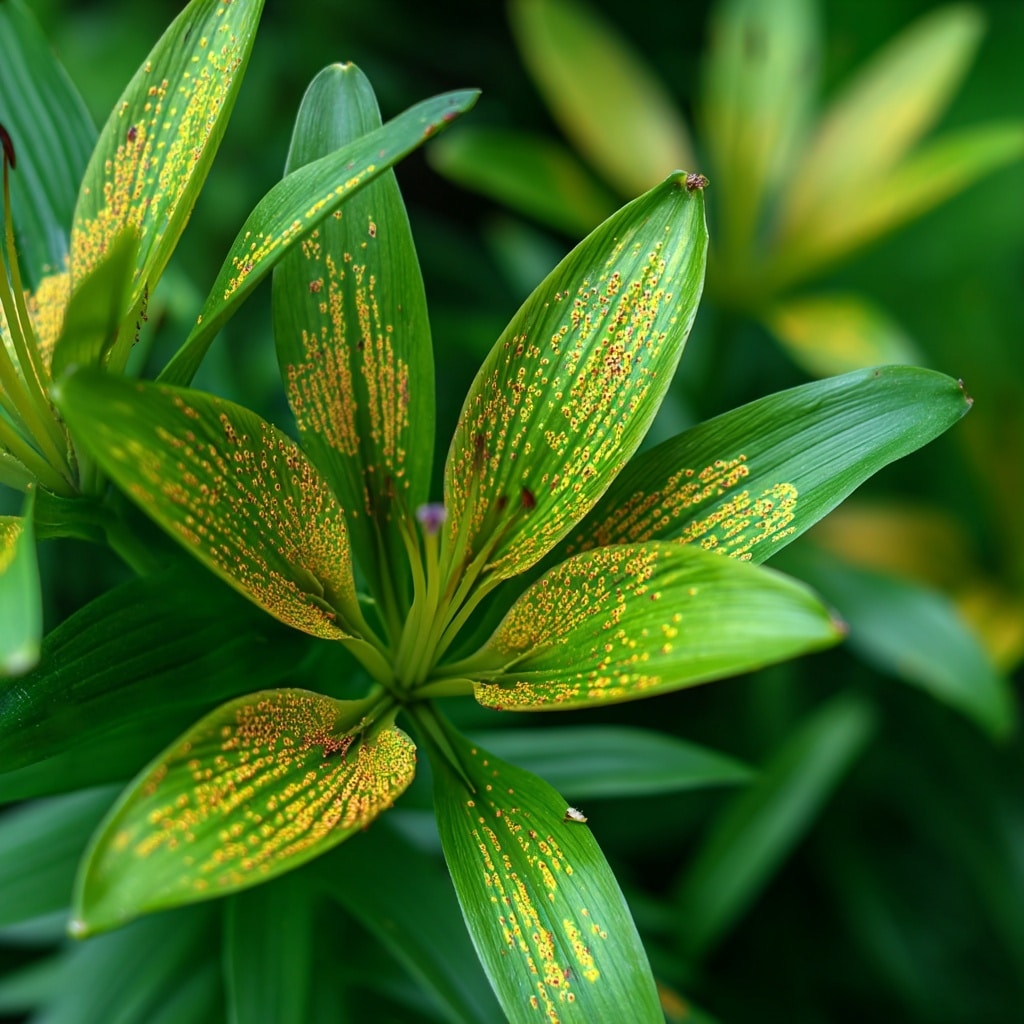Lily flower lovers often find themselves captivated by the vibrant beauty and resilience of the tiger lily. With its bold orange petals freckled in dark spots, this striking perennial is more than just a showstopper—it’s a low-maintenance gem that rewards even novice gardeners. Whether you’re planting tiger lily bulbs for the first time or looking to refresh your flower beds, learning the right way to plant, nurture, and multiply these hardy lilies will ensure seasons of stunning blooms. In this guide, we’ll walk through practical, proven steps to help your lily flower thrive, from soil prep to pest prevention.
Table of Contents
Quick Care Tips for Tiger Lily Flowers
Tiger lily flowers are surprisingly easy to grow when given the right conditions. Below is a quick-reference care guide to help your lily flower bulbs flourish.
Basic Plant Profile
- Botanical Name: Lilium lancifolium
- Common Name: Tiger Lily
- Family: Liliaceae
- Hardiness Zones: 3–9 (USDA)
- Height: 3 to 4 feet tall
- Bloom Time: Mid to late summer
- Flower Color: Bright orange with dark spots (some hybrids offer red, yellow, and white)
Light & Location
- Prefers full sun but tolerates partial shade
- Plant in a sunny area for tall, upright growth
- In shaded spots, tiger lilies may lean toward light
Soil Requirements
- Well-draining, loose soil is key
- Amend with compost or sand for better drainage
- Avoid soggy conditions to prevent root rot
Watering
- Keep soil consistently moist but never waterlogged
- Deep watering once a week is often enough once established
- Mulch helps retain moisture and regulate soil temperature
Temperature & Humidity
- Tolerates summer heat but prefers moderate conditions
- Grows well in areas with average humidity
Feeding
- Apply a balanced fertilizer in spring as new growth appears
- Compost-rich soil can reduce the need for frequent feeding
Ideal Uses
- Great for garden borders, cut flower arrangements, and naturalized spaces
- The lily flower also adds vertical interest and color to mixed beds
What Does a Tiger Lily Look Like?

The lily flower known as the tiger lily stands out in any garden with its fiery orange petals and distinctive dark spots that resemble a tiger’s coat. These showy blooms typically appear in mid to late summer, often reaching up to 4 inches across. Each tall stem can carry multiple blossoms—sometimes more than a dozen—making this variety a bold and prolific performer.
Tiger lilies grow on sturdy, upright stems that range from 3 to 4 feet in height. The leaves are narrow and lance-shaped, arranged in whorls or spirals along the stem, giving the plant a grass-like base with an elegant vertical structure. This makes it a great companion for low-growing perennials or as a backdrop in flower beds.
There are also hybrid forms of tiger lilies that come in red, yellow, and even white shades, though the traditional orange variety remains the most popular. Double-flowered types, which feature extra layers of petals and no visible stamens, add even more drama to the landscape.
When and How to Plant Tiger Lily Bulbs

To give your lily flower the best start, plant tiger lily bulbs in either late fall or early spring—before new growth begins but after danger of frost has passed. Timing is key, as it allows bulbs to establish roots before the intense heat of summer or the freezing chill of winter sets in.
Step-by-Step Planting Guide:
- Choose the Right Spot:
Select a sunny, well-drained area where your lily flower will get at least 6 hours of sunlight per day. - Prepare the Soil:
Loosen the soil to a depth of about 12 inches. Mix in compost, sand, or peat moss to improve drainage and fertility. - Planting Depth and Spacing:
- Dig holes 6 inches deep
- Space bulbs 8 inches apart
- Set the bulb pointy side up, flat side down
- Gently cover with soil and tamp down lightly
- Water Thoroughly:
After planting, give the area a deep watering to help settle the soil and initiate root development. - Mulch to Protect:
Apply a 2–3 inch layer of mulch to retain moisture and shield bulbs from temperature swings.
Tiger lily bulbs are easy to handle, but be careful not to damage the scales. Broken scales can reduce bloom performance and bulb health.
Planting your lily flower properly sets the stage for strong stems, vivid blooms, and a healthy root system that supports future growth.
Caring for Tiger Lily Flowers During the Growing Season

Once your lily flower bulbs are in the ground, a bit of seasonal care will help them reach their full blooming potential. Fortunately, tiger lilies are low-maintenance plants, making them ideal for both beginners and experienced gardeners.
Deadhead Spent Blooms
After your lilies begin to flower, regularly remove faded blossoms. This simple task, known as deadheading, redirects the plant’s energy into producing more blooms rather than seed development. It also keeps your garden looking tidy and prevents self-seeding in areas where you want to control spread.
Tip: Use clean, sharp shears to snip off spent flowers just above the first set of healthy leaves.
Watering Wisely
Tiger lilies like evenly moist soil—not soggy. Water deeply about once a week, especially during dry spells. Once established, these lily flower bulbs are surprisingly drought-tolerant and can thrive on natural rainfall in most regions.
- Avoid overhead watering to prevent fungal issues
- Early morning watering is best to allow foliage to dry during the day
Mulch for Moisture and Nutrients
Apply a 2–3 inch layer of organic mulch in early spring. This helps:
- Retain moisture
- Suppress weeds
- Regulate soil temperature
- Feed your lily flower gradually as mulch breaks down
Use finished compost, shredded bark, or leaf mold to add extra nutrients while also protecting delicate emerging shoots.
Propagating and Dividing Tiger Lily Flowers in Autumn

Come fall, your lily flower plants will begin to fade as they enter dormancy—but this is the ideal time to propagate and divide tiger lilies. Not only does this refresh overcrowded clumps, but it also gives you more bulbs to expand your garden or share with friends.
How to Divide Tiger Lily Bulbs
- Wait for Foliage to Die Back:
Once stems turn completely brown and dry, it’s time to dig. - Lift Carefully:
Use a garden fork or spade to gently lift the bulbs from the soil. Avoid damaging the bulb or its small offsets. - Separate Offsets:
Each mature bulb will often have smaller “bulbils” or offsets around its base. Gently separate these to replant or store. - Replant or Store:
- Replant immediately in well-prepared soil (see planting section above)
- Or store in a cool, dry place until early spring
Mosaic Virus Warning
Tiger lilies are tolerant of the lily mosaic virus, but they can act as silent carriers, infecting nearby Asiatic or Oriental lily flowers. Symptoms in hybrids include:
- Mottled or streaked leaves
- Stunted growth
- Deformed blooms
Prevention Tips:
- Avoid planting tiger lilies near hybrid varieties
- Always sanitize tools between uses
- Discard infected plants and bulbs immediately
Fall Soil Boost
After dividing, enrich your beds with aged compost, sand, or peat moss. This improves drainage and nutrient levels, setting your lily flower bulbs up for success next season.
Pests and Diseases That Affect Tiger Lily Flowers

While the lily flower is generally hardy, tiger lilies can still face a few common pests and diseases. Spotting issues early and acting quickly can prevent long-term damage.
Common Pests
Aphids
- Symptoms: Sticky residue, curled leaves, and distorted growth
- Treatment: Use insecticidal soap, neem oil, or a strong stream of water to dislodge them
Red Lily Beetles
- Symptoms: Bright red beetles on foliage, along with brown, slimy larvae
- Treatment: Hand-pick beetles and use approved insecticides if infestations are severe
Spider Mites
- Symptoms: Tiny webs, yellow-speckled leaves
- Treatment: Boost humidity, use miticides, or spray with soapy water
Fungal Diseases
Botrytis (Gray Mold)
- Symptoms: Brown or gray spots on leaves and petals
- Cause: High humidity or overhead watering
- Prevention: Ensure good air circulation, remove infected foliage, and avoid wetting leaves
Basal Rot
- Symptoms: Yellowing leaves, mushy bulbs
- Cause: Poor drainage or overwatering
- Treatment: Dig up and discard infected bulbs, and improve drainage
Blue Mold
- Symptoms: Blue-green fuzz on stored bulbs
- Cause: Bruising or injury to bulbs
- Fix: Dust affected bulbs with fungicide powder before replanting
Viral Diseases
Lily Mosaic Virus
- Symptoms: Flecked, streaked leaves; deformed or streaky flowers
- Spread by: Aphids or contact with infected tools
- Control: Remove and destroy infected plants. Sanitize tools to prevent further spread
Best Practices for Prevention
- Space plants for airflow
- Water at the base, not overhead
- Keep the area around your lily flower beds clean and free of debris
- Rotate planting locations every few years to prevent soil-borne diseases
How to Grow Tiger Lilies from Seeds or Bulbils

While dividing bulbs is the easiest method of propagation, growing tiger lily flowers from seeds—or more commonly, bulbils—can be a fun and rewarding option for patient gardeners.
What Are Bulbils?
Tiger lilies naturally produce bulbils: small, dark, bulb-like growths that form in the leaf axils after flowering. These contain all the genetic material needed to grow a new lily flower plant.
Tip: Don’t confuse bulbils with seeds. Tiger lilies rarely set viable seeds, but bulbils are a dependable way to multiply plants.
How to Harvest and Plant Bulbils
- Let Bulbils Mature:
After blooms fade, leave the stalks in place until bulbils turn dark brown or black and easily detach with a gentle touch. - Choose Your Growing Method:
- Direct sowing: Plant bulbils about 1 inch deep in a prepared garden bed in fall.
- Indoor starting: Stratify bulbils by refrigerating them for 4–6 weeks. Then plant in sterile seed-starting mix and keep moist until sprouting.
- Care While Young:
Bulbil-grown lily flowers usually take 2–3 years to bloom, so be patient. Keep young plants well-watered and protected from harsh conditions.
Why Start from Bulbils?
- A cost-effective way to expand your tiger lily collection
- Helps preserve unique color variations from parent plants
- Great educational activity for home gardeners and kids
Why Grow Tiger Lily Flowers?

If you’re looking for a bold, low-maintenance addition to your garden, the lily flower—especially the tiger lily variety—is hard to beat. These vibrant perennials bring a unique blend of color, structure, and reliability that few other flowers can match.
Eye-Catching Blooms
Tiger lilies produce striking orange petals adorned with deep maroon or black speckles, mimicking the pattern of a tiger’s coat. Each sturdy stem can bear up to 12 blossoms, creating an impressive display in borders, cutting gardens, or along fences.
Some hybrids also offer red, yellow, or white variations for gardeners seeking different color schemes.
Hardy and Low-Maintenance
- Thrive in USDA zones 3 to 9
- Tolerate heat, poor soil, and moderate drought once established
- Resistant to deer and many common pests
- Perfect for gardeners who want beauty without constant upkeep
Versatile Garden Use
- Plant in mass groupings for visual impact
- Add vertical height to mixed beds
- Use as cut flowers for vibrant indoor arrangements
- Naturalize in woodland or wildflower gardens
Fast Spreaders (With Caution)
Tiger lilies can self-seed and spread quickly, earning them the nickname “ditch lily” in some regions. While this can be great for filling in large spaces, they may become invasive if left unchecked.
To prevent unwanted spreading:
- Deadhead regularly
- Divide clumps every few years
- Keep them away from vulnerable hybrid lilies due to virus transmission risk
Where Do Tiger Lily Flowers Grow Wild?

Though tiger lily flowers originated in East Asia, they’ve become naturalized in many parts of North America. Thanks to their resilience and adaptability, they can now be found growing wild in places like:
- Roadsides and ditches
- Abandoned lots
- Railroad embankments
- Woodland edges
These naturalized stands often appear in USDA zones 3 through 9, where the soil is well-drained and they receive moderate sunlight. Their grass-like foliage and tall, vibrant blooms make them easy to spot—even from a distance.
Wild vs. Invasive
It’s important to note that there are two plants commonly called “tiger lily” in the wild:
- True Tiger Lily (Lilium lancifolium):
- Grows from bulbs
- Can spread via bulbils and become invasive if unmanaged
- Susceptible to and can carry lily mosaic virus
- Daylily (Hemerocallis fulva):
- Grows from tuberous roots
- Often called “ditch lily”
- Also spreads rapidly but isn’t technically a true lily flower
Should You Plant Tiger Lilies in the Wild?
While their ability to thrive without much help is impressive, planting tiger lilies in unmanaged areas isn’t always a good idea. Because of their invasive potential, especially in native plant environments, it’s best to:
- Grow them in contained garden beds
- Monitor and divide regularly
- Avoid planting near rare or native lily species
With just a bit of oversight, the tiger lily flower can be a beautiful, long-lasting staple in home gardens without becoming a problem in the wild.
Conclusion
The lily flower, especially the tiger lily, is a true garden standout—bold, easy to care for, and stunning in bloom. With just a bit of soil prep, seasonal maintenance, and mindful propagation, you can enjoy these radiant flowers year after year. Whether you’re planting a single clump or creating a sweeping display, tiger lilies reward you with vivid color and reliable growth. Just remember to keep them contained, especially if you garden near hybrid or native lilies, to protect your space and surrounding plants.




